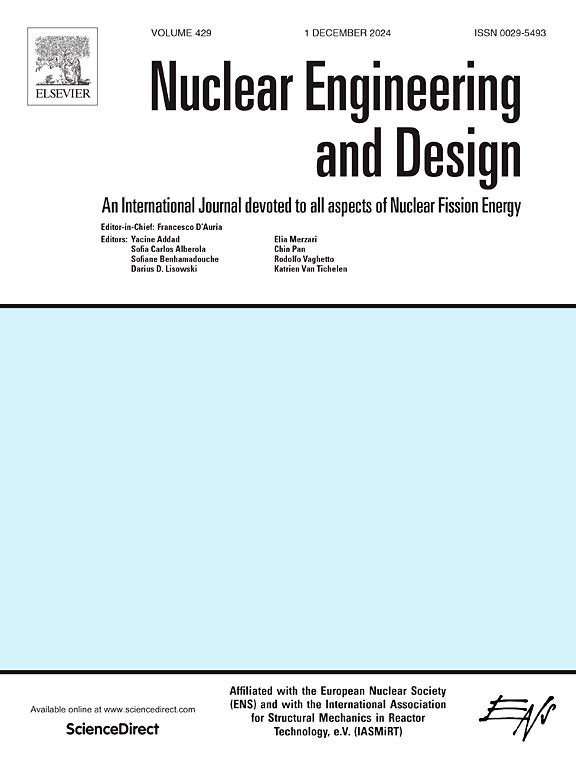Development and preliminary validation of a mechanistic multiscale model for fuel-cladding chemical interaction in metallic nuclear fuels
IF 1.9
3区 工程技术
Q1 NUCLEAR SCIENCE & TECHNOLOGY
引用次数: 0
Abstract
Despite decades of fuel rod material and design improvements, fuel-cladding chemical interaction (FCCI) remains the single-most lifetime-limiting behavior for modern metallic fuel rods. Constraining fuel lifetime increases operating costs, limiting the economic viability of commercializing metallic nuclear fuel technology. A mechanistic multiscale model utilizing the finite element method-based MARMOT and BISON codes was developed to more confidently predict cladding-side FCCI and its impact on fuel performance. The new BISON model incorporates mesoscale models for the effects of fuel microstructure evolution on the transport of wastage-inducing lanthanides through the fuel and for the kinetics of cladding wastage layer growth. The mesoscale models, in turn, build on lanthanide transport property data obtained from the atomistic scale. Preliminary validation studies using wastage thickness and cladding profilometry data from four fuel rods irradiated in Experimental Breeder Reactor II experiment X447 and one fuel rod from Fast Flux Test Facility experiment IFR1 show that the new model predicts cladding wastage and its effects on cladding deformation as well as existing empirical FCCI correlations. The new model is expected to aid in the design of new metallic fuel concepts, including fuel additives, cladding liners, and sodium-free annular fuel geometries. Future work will focus on broader validation and refinement of the model’s treatment of different fuel alloys and cladding materials.
求助全文
约1分钟内获得全文
求助全文
来源期刊

Nuclear Engineering and Design
工程技术-核科学技术
CiteScore
3.40
自引率
11.80%
发文量
377
审稿时长
5 months
期刊介绍:
Nuclear Engineering and Design covers the wide range of disciplines involved in the engineering, design, safety and construction of nuclear fission reactors. The Editors welcome papers both on applied and innovative aspects and developments in nuclear science and technology.
Fundamentals of Reactor Design include:
• Thermal-Hydraulics and Core Physics
• Safety Analysis, Risk Assessment (PSA)
• Structural and Mechanical Engineering
• Materials Science
• Fuel Behavior and Design
• Structural Plant Design
• Engineering of Reactor Components
• Experiments
Aspects beyond fundamentals of Reactor Design covered:
• Accident Mitigation Measures
• Reactor Control Systems
• Licensing Issues
• Safeguard Engineering
• Economy of Plants
• Reprocessing / Waste Disposal
• Applications of Nuclear Energy
• Maintenance
• Decommissioning
Papers on new reactor ideas and developments (Generation IV reactors) such as inherently safe modular HTRs, High Performance LWRs/HWRs and LMFBs/GFR will be considered; Actinide Burners, Accelerator Driven Systems, Energy Amplifiers and other special designs of power and research reactors and their applications are also encouraged.
 求助内容:
求助内容: 应助结果提醒方式:
应助结果提醒方式:


